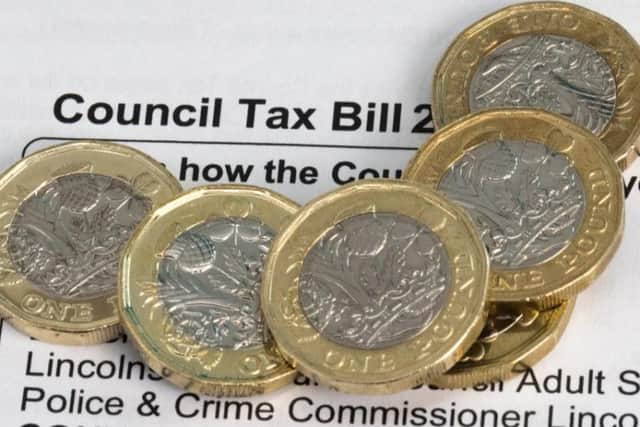When do you not have to pay council tax? Payment plans explained and how to check your council tax band
The cost of a council tax bill is usually split into 10 monthly instalments, meaning there are two months of the year that are completely payment free.
Paying your council tax bill
If you pay your council tax in 10 instalments, you will be granted a tax-break in your bill during February and March.


Advertisement
Hide AdAdvertisement
Hide AdWhile most people pay their bill over the course of 10 months, it is possible to spread the cost over 12 months instead.
Those struggling to afford to pay in 10 instalments can contact their local council to adjust their payment plan, spreading the payments across 12 months instead.
Your council tax bill will tell you:
- how much you have to pay for the year


- how that amount has been worked out
- the dates you have to pay
Your council may give you a one-off discount if you still can’t pay what you owe, and you can also check if you are eligible for the following:
- Council Tax Reduction - if you are on a low income or get benefits
- A reduced council tax bill - if you live on your own, for example
Who has to pay council tax?
You will usually have to pay council tax if you are aged 18 or over, and you own or rent a home.
A full council tax bill is based on at least two adults living in a home, with spouses and partners who live together being jointly responsible for bill payments.
You will receive 25 per cent off your bill if you live on your own, or if no-one else in your home is an adult.
Advertisement
Hide AdAdvertisement
Hide AdYou will usually get a 50 per cent discount if no-one living in your home, including yourself, counts as an adult.
And if everyone in your home, including yourself, is a full-time student, you will not be required to pay any council tax.
What are the council tax bands?
Council tax bands are calculated based on the value of your property at a specific point in time.
In England, this band is based on what your property value would have been on 1 April 1991. If your property did not exist in 1991, it will be compared to similar types of properties in the area to determine the band.
The assessments are based on the following criteria of your home:
- Size
- Layout
- Character
- Location
- Change in use (if applicable)
- Value on a certain date (usually 1991) - depending on its location
In Scotland, properties are placed into one of eight bands which range from A to H, each with a different price cap. The bands are as follows:
- Band A - up to £27,000
- Band B - over £27,000 and up to £35,000
- Band C - over £35,000 and up to £45,000
- Band D - over £45,000 and up to £58,000
- Band E - over £58,000 and up to £80,000
- Band F - over £80,000 and up to £106,000
- Band G - over £106,000 and up to £212,000
- Band H - over £212,000
How do I check if I’m paying too much?
In Scotland, households can make a challenge via the Scottish Assessors Association (SAA). This can be done by searching for a property under "To Search for a Council Tax" band, selecting the property in question, followed by "Make a Proposal".
Advertisement
Hide AdAdvertisement
Hide AdMartin Lewis, founder of Money Saving Expert, also recommends asking your neighbour to find out which tax band they are in.
Alternatively you can find out your neighbour's tax band via the SAA.
If they are in a lower tax band, then it may be possible that your property has been assigned the wrong band. You can check this by finding out the value of your property in 1991, by entering a previous valuation of your house into Nationwide's House Price Index Calculator.
Once you have a 1991 valuation, simple compare it to the original tax bands.
If you believe your property has been assigned to the wrong band, you can apply for a reassessment. However, this does pose a risk that your property may be moved up or down a tax band, so it is vital you carry out an accurate valuation.